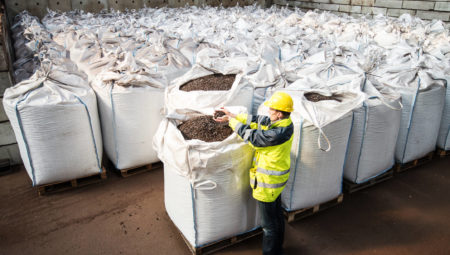The Dutch summer has ended and the barbecue season along with it. The quantity of ‘kilo killer deals’ and wrong fish that finds its way from the shop to the grill and the plate has gradually been dropping for years due to the attention for animal welfare and the depletion of the world’s oceans. But the story is different for the charcoal on which the food is cooked. The buyer generally lacks awareness about the production method, partly because of the poor information provision, while the lion’s share of the coal comes from heavily polluting industry.
Primitive, inefficient process
‘Below the line those businesses have an enormous impact on humans, the environment and nature,’ according to Siemons. ‘The charcoal burnt on barbecues is just a fraction of the total worldwide consumption. It constitutes the main fuel in large parts of the world, for instance for heaters and cookers or for energy generation for factories. We are talking about a global market of a good fifty million tonnes. The production in non-Western countries is generally a primitive, inefficient process that is scarcely under control. Wood, obtained legally or otherwise, is covered and ignited. It carbonises because the oxygen is withheld. This releases large amounts of the harmful greenhouse gases methane and nitrous oxide, which are 21 and 310 times more harmful respectively than CO2. At CleanFuels we want to change this by developing sustainable carbonisation technology.’
Merger with TNO
Siemons completed his mechanical engineering studies at the University of Twente in 1984. He set to work at the newly established BTG that aimed at technology development and consultancy in the field of energy generation from biomass. Siemons became co-owner, developed into an authority on the production of charcoal and was involved in a large number of projects in countries like Sudan, Egypt and Mozambique. This often involved linking up with development programmes of United Nations Industrial Development Organization, Food and Agricultural Organization of the United Nations and the Directorate-General for International Cooperation. While technological innovation for the generation of energy from biomass was increasingly subsidised by the government, the market for BTG toppled. The company merged with technology partner TNO in 1998, which eventually bought it out. Siemons obtained a doctorate as economist and travelled the world as advisor for the World Bank, but in the end chose the excitement of running a business again. In 2005 he started CleanFuels.
Slow pyrolysis
‘Initially we focused on extracting oil from biomass using flash pyrolysis: the swift heating of biomass in the absence of oxygen. What you get is mainly oil, plus some gas and charcoal,’ explains Siemons. ‘Everywhere in the world a lot of biomass is being burned inefficiently, including in sugar cultivation. By making oil from it you have a great way of extracting its value, for example by producing fuel for other industries. We tried this in a trial project in Uganda. However, the business case turned out not to be sustainable in practice. The price of the pyrolysis oil cannot compete with fossil oil. Charcoal, however, is a high-quality product; on an energy basis it is even two times more expensive than petrol. There is a large market and huge environmental profit to be made. So we shifted our attention to the development of technology and knowledge in the sustainable production of charcoal by means of slow pyrolysis. In our test plant in Oldenzaal we now make coal of exceptional quality. Oil and gas are now by-products, and we use them in commercial systems not only for the process itself, but also to generate a surplus of electricity and heat. The process has no polluting emissions, it is high-tech and it is protected by various patents.’
Return
The knowledge and technology of CleanFuels have enormous potential export value. However, marketing this is no simple matter. It is a question of holding out for a long time. This has been underlined by a first large order from South Africa.
Siemons: ‘It comes from a landscaping company that collects a tremendous amount of biomass, for example from farmers and along electricity cable routes. Until now it was shredded and exported as a low-value product. Now they are going to use our technology to carbonise the biomass. Soon 65 percent of their biomass will be converted into charcoal and 35 percent into electricity and heat. This increases the economic return greatly. All the same, building and running a pyrolysis plant are far removed from their core business. Moreover, they do not know the coal market. So we support them in all kinds of areas, in the entire process from technology to sales. This kind of broad consultancy is inherent to our product. It makes what we do even more complex, but also especially attractive and valuable.’
Fertiliser pellets from charcoal
Thanks to support through ERDF funds and from the provinces of Gelderland and Overijssel, the CleanFuels test plant was recently expanded with a new plant for carbonising pellets. These pellets can be made from all kinds of biomass, but CleanFuels lays the stress on manure.
‘There is still a large manure surplus in the Netherlands and other parts of Europe,’ according to Siemons. ‘Carbonising that manure can contribute to solving that problem. In our process the minerals are conserved in the coal. This creates a concentrated fertiliser of coal pellets whose mass is a factor five less than the original already diluted raw material. This also reduces the transport costs considerably. What is more, the CO2 from the manure is secured in the carbon. So it does not get into the atmosphere anymore. In this case, too, our pyrolysis process is energy-neutral, from drying through to carbonising. I see a beautiful future for this technology, all the more because it can be used to extract value from widely varying raw materials like manure, grass and sewage sludge.’



